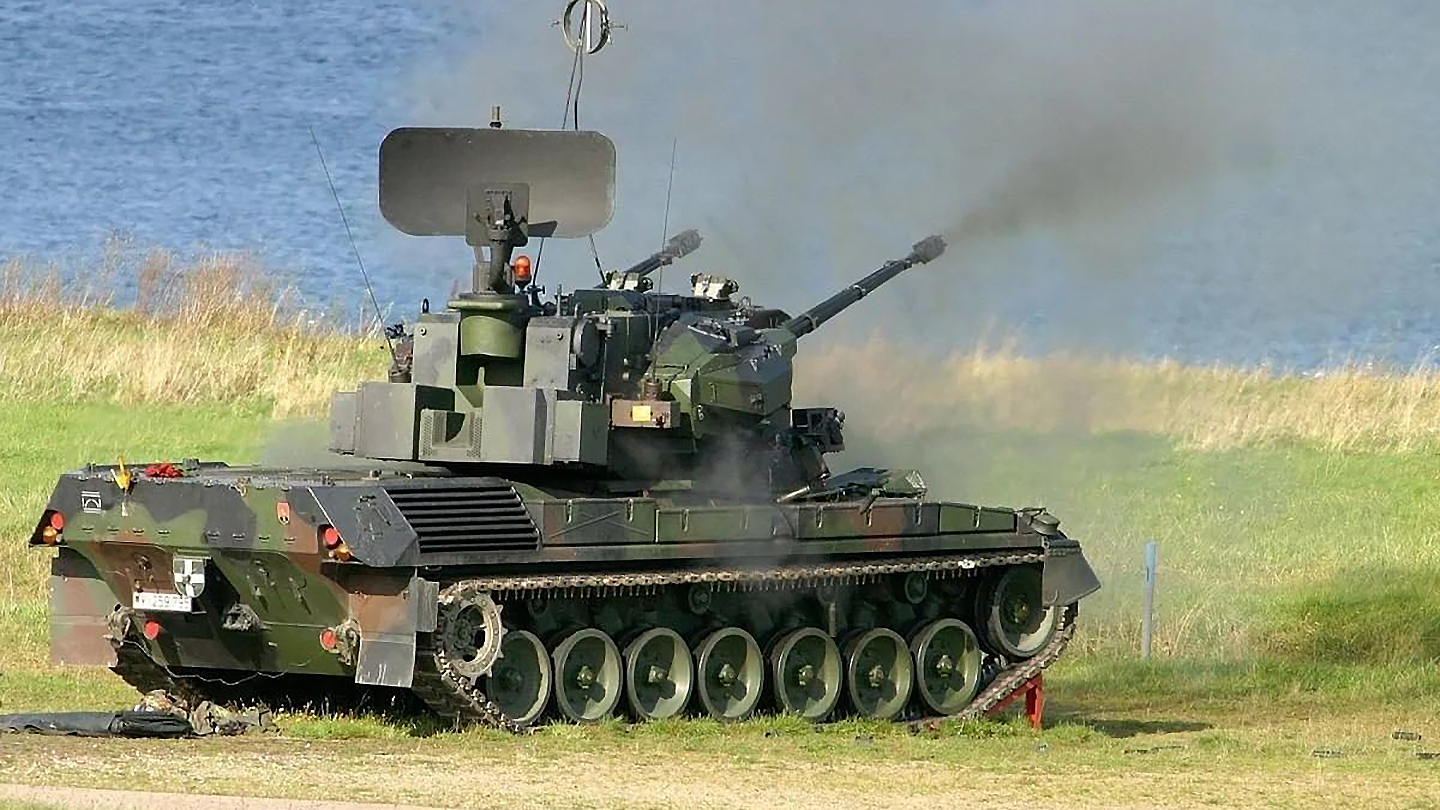More air-defense weapons are on the way from several supporting countries to Ukraine, which is asking for more equipment donations to protect against ongoing Russian missile and drone barrages aimed at civilian infrastructure.
Germany has promised Kyiv seven more of its Gepard (German for cheetah) 1A2 self-propelled anti-aircraft gun systems, or SPAAGs. Berlin has now delivered 30 of the tracked Gepard vehicles, which sport a pair of 35mm automatic cannons mounted on a rotating turret that also features an integrated radar, according to the German government’s ongoing tally of military and humanitarian aid it has sent to Ukraine.
Following a recent visit to Kyiv, Gustav Cressel, a senior policy fellow at the European Council on Foreign Relations, said the top item on Ukrainian soldiers’ weapons wish lists was more Gepards.
Ukraine is using the Gepard to shoot down everything from cruise missiles to Iranian-built Shahed suicide drones that Russian forces are firing against military and civilian targets.
The systems will need to be overhauled, repaired, and upgraded before being shipped to Ukraine, which could happen by Spring.
Romania, Jordan, Belgium, and Brazil also have fleets of these anti-aircraft weapons, but have yet to offer them to Ukraine. Belgium’s Gepards are an earlier, less-capable 1A1 version.
The British government has secretly promised a fleet of 125 towed anti-aircraft weapons of an unspecified design to help protect Ukrainian cities from Russian missiles and aircraft. James Heappey, the British Minister of State for the Armed Forces, said on Dec. 2 that the British government would provide the weapons as part of a military aid package announced on Nov. 19.
“Precise details remain commercially sensitive at this time,” Heappey said in a statement. “We continue to work closely with Ukraine to source a range of equipment, which they can deploy rapidly and effectively in their battle against Russian aggression. This includes both NATO and non-NATO standard equipment and munitions.”
Meanwhile, the U.S. government recently awarded Raytheon a $1.2 billion contract to buy an unspecified number of National Advanced Surface-to-Air Missile Systems, or NASAMS, for Ukraine. The massive contract also includes associated equipment, contractor services, and spare parts “in support of the efforts in Ukraine,” and covers work through 2025.
Before we get into the details of what has transpired in the last 24 hours in Ukraine, catch up on our previous rolling coverage of the conflict here.
The Latest
Ukraine’s Ministry of Defense claims 90,000 Russian troops have died since large-scale combat operations began in late February. Both sides routinely publicize the number of enemy troops killed, which are difficult, if not impossible to independent verify, while largely staying silent or deliberately undercounting their own battlefield losses. Still, Ukraine has been a more reliable source when it comes to battlefield metrics than Russia.
After withdrawing from the west bank of the Dnipro River in the south, Russian forces are pushing in several places in the east, according to the latest map of the frontlines from the U.K. Ministry of Defense (MoD).
In its latest intelligence assessment of the war, the U.K. MoD says Ukraine exploited Russia’s withdrawal from the west bank of the Dnipro by striking logistics nodes and lines of communication behind its new defensive lines. That has forced Russia to relocate logistics nodes, particularly railway transfer points farther from the front, the U.K. MoD said.
“Russian logistics units will need to conduct extra labor-intensive loading and unloading from rail to road transport,” the U.K. MoD said. “Road moves will subsequently still be vulnerable to Ukrainian artillery as they move on to supply Russian forward defensive positions. Russia’s shortage of munitions (exacerbated by these logistics challenges) is likely one of the main factors currently limiting Russia’s potential to restart effective, large-scale offensive ground operations.”
Strikes that resulted in a large fire were reported at a Russian fuel depot about 60 kilometers (just shy of 37.3 miles) behind the frontlines. As Ukrainian forces move into position along the Dnipro River, their long-range artillery systems can, in turn, reach farther into Russian-occupied territory, threatening any forces building up for a future counterattack.
F-15E Strike Eagles of the U.S. Air Force’s 48th Fighter Wing stationed at Royal Air Force Lakenheath in the United Kingdom have begun deterrence operations at Łask Air Base in Poland as of Nov. 29. The deployment is “part of a scheduled aircraft rotation in support of the U.S. forward fighter presence along NATO’s Eastern Flank,” according to a statement from U.S. Air Forces Europe.
The F-15Es will take over the NATO Shielding mission from F-22 Raptors of the 90th Expeditionary Fighter Squadron (part of the 3rd Wing at Joint Base Elmendorf-Richardson) which have been in Poland since July. The Raptors will return to Alaska before the end of the year.
Also in Europe, several Ukrainian embassies have received “bloody packages” containing animal parts, according to Ukraine’s Foreign Minister. This follows a series of letter bombings targeting the Ukrainian and U.S. embassies in Spain.
In an interview with CBS News’ “60 Minutes” scheduled to air on Sunday, French President Emmanuel Macron reportedly said Russian President Vladimir Putin should be charged with war crimes for his war on Ukraine.
In a clip of the interview posted by CBS, Macron said it is “important to convey the message that it is up to the Ukrainians to decide” how and when to negotiate an end to the war.
“The only way to find a solution would be through negotiations,” Macron said. “I don’t see a military option on the ground.”
Israel has delivered the first of four armored ambulances to Ukraine for use in civilian rescue operations.
An interesting video of a battle-damaged Ukrainian BTR-4 “Bucephalus” wheeled infantry fighting vehicle has surfaced online. The video below shows the vehicle limping from a rather heated firefight with all its tires nearly melted off its wheels, but otherwise intact.
Another Ukrainian armored vehicle, this one a YPR-765 armored personnel carrier (APC), was captured by Russian Wagner mercenaries in the Donetsk region.
Satellite photos from the Russian-occupied city of Mariupol – besieged for months now and largely obliterated by Russian forces — show some notable new features. In the images below, a false wall or screen has been erected around the city’s iconic theater, destroyed during the devastating Russian bombardment. The move is likely to hide what is a horrific reminder of the heinous acts committed against the city from the eyes of a populace now living under Russian occupation.
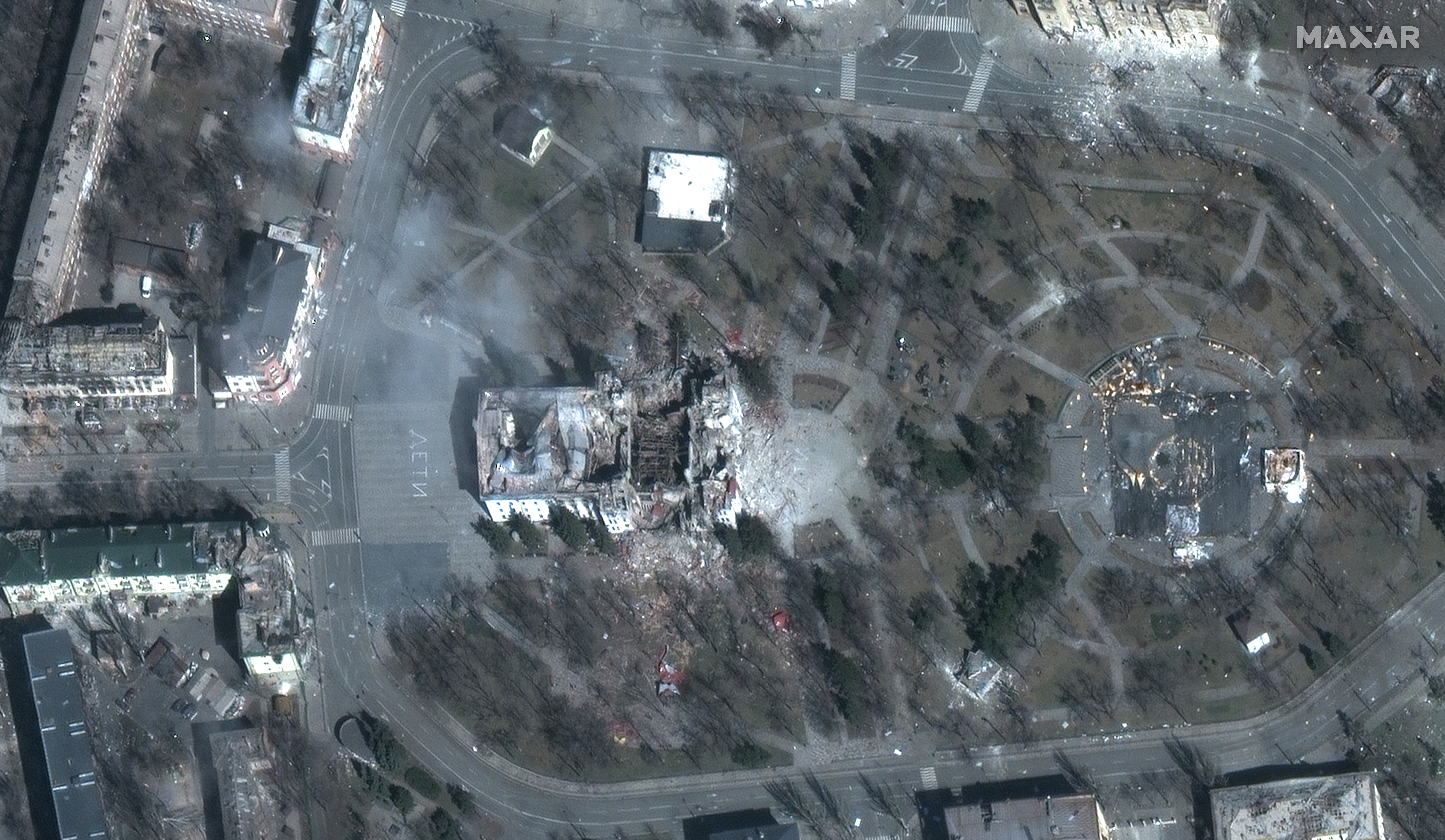
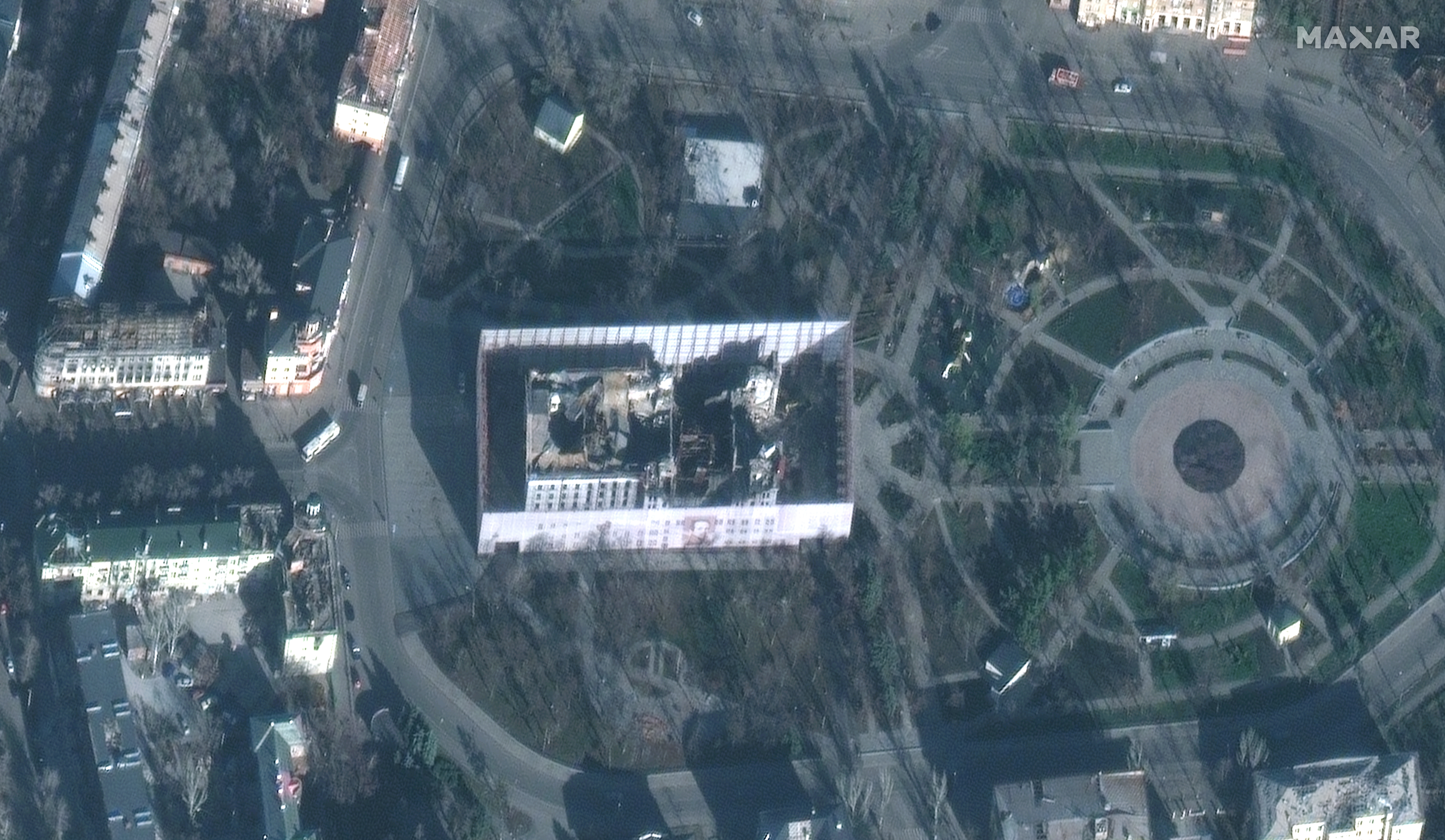
Elsewhere in the city, satellite imagery shows a significant expansion of a large cemetery, pointing to the toll the Russian siege and subsequent occupation has taken on the civilian population.
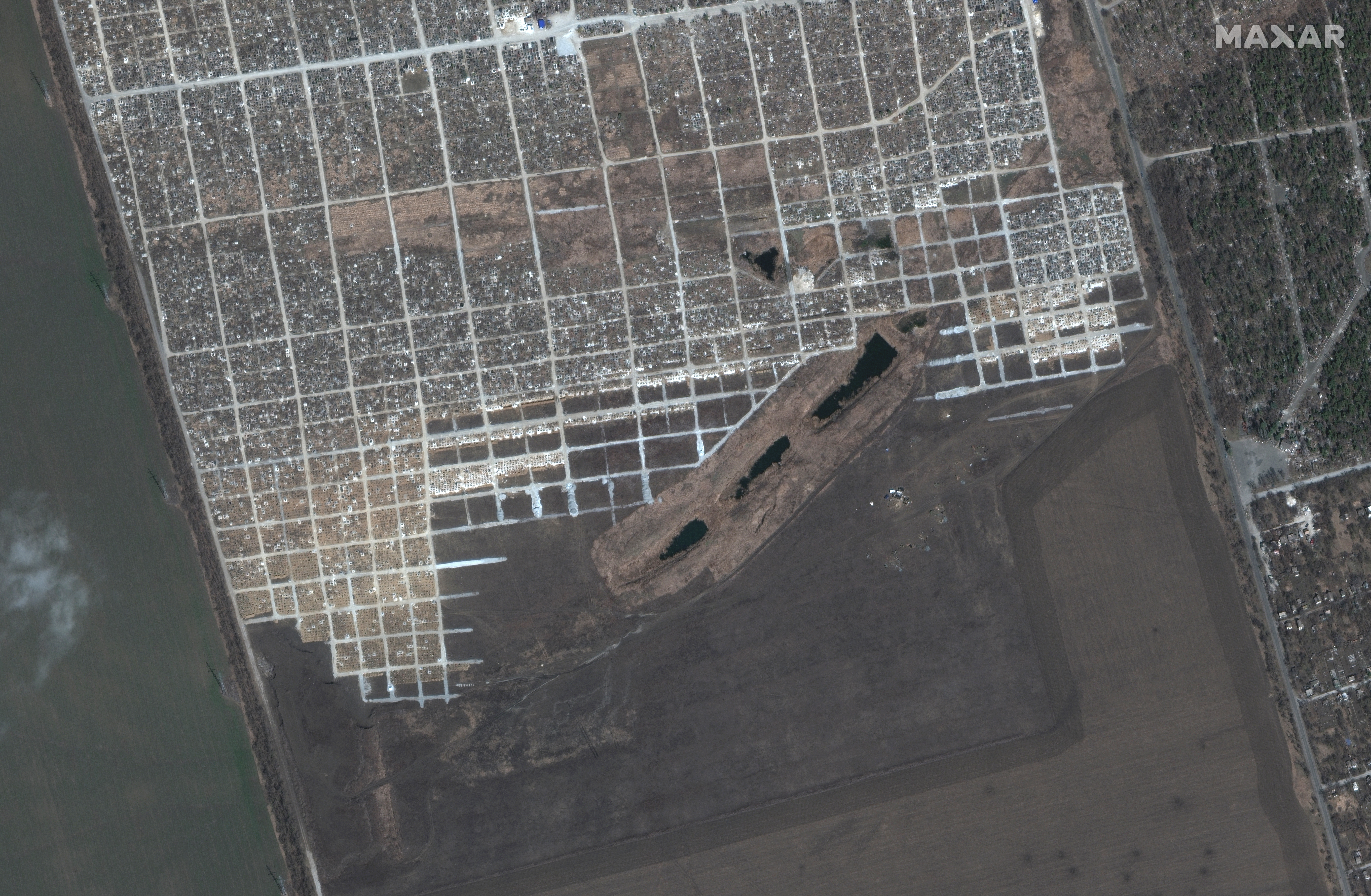
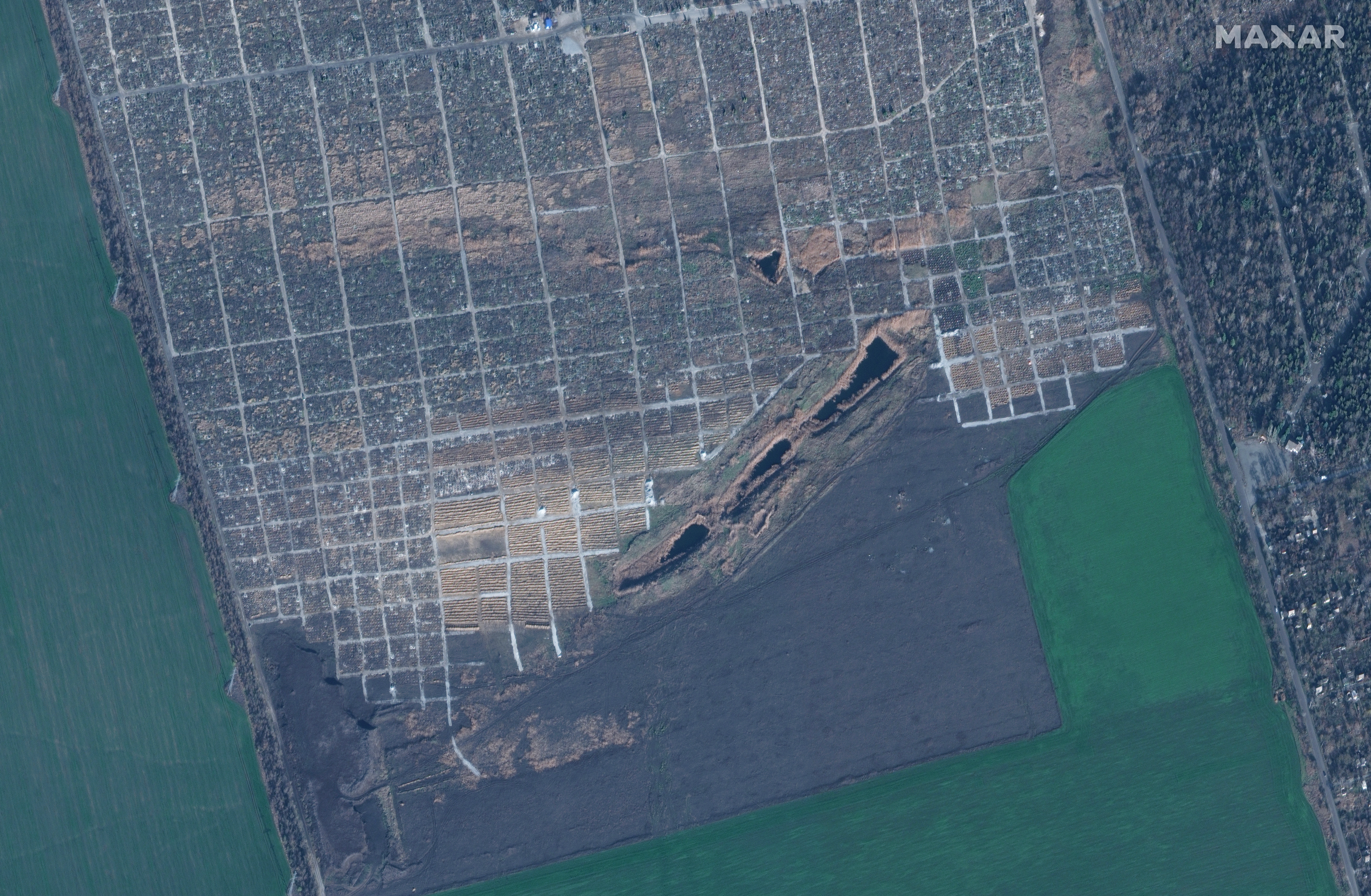
Another of the Mi-17 helicopters the U.S. bought for the Afghan Air Force, but then donated to Ukraine after the U.S. withdrawal and subsequent Taliban takeover of the country, was seen in Ukrainian service recently. In the photo below, the aircraft is clearly identifiable by its brown camo paint scheme. It also appears to still sport an Afghan Air Force roundel at the rear of the fuselage.
In another potential first for warfare, a drone has scored an air-to-air kill against another drone using a free-fall weapon. While a drone was previously documented ramming another drone in mid-air, in the latest incident, one drone drops a munition on its adversary. The video below shows a Russian DJI Mavic quadcopter hovering over another drone, descending to just above it, and releasing a grenade, which hits the enemy drone’s rotors causing it to tumble from the sky.
Barring major news, that’s it for now until our next update.
Contact the author: Dan@thewarzone.com
